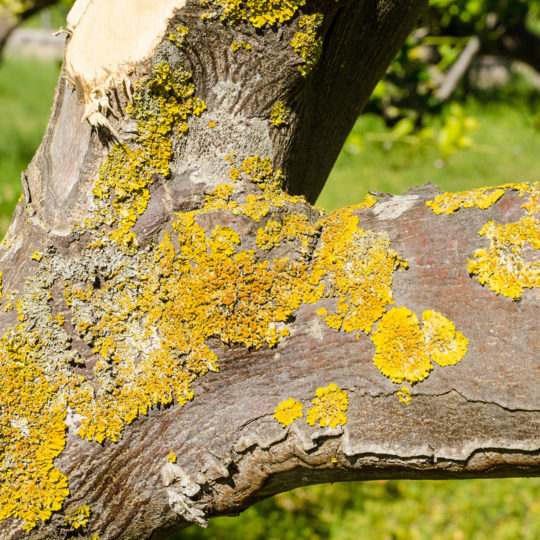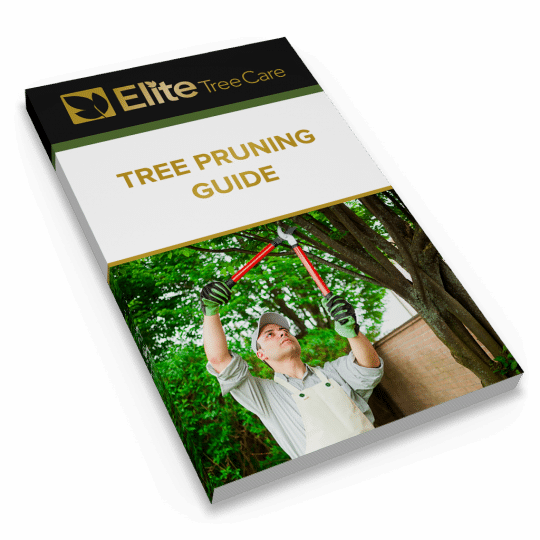4 Signs of Tree Disease & Damage
And When to Prune
Posted
October 19, 2023

While you’re focused on the changing leaves this season, it’s a great time to look a little closer at the condition of your tree. There are several indicators that your tree could use some pruning. Learn the signs of tree disease, damage, and pests and what the next steps should be.
Signs of Tree Disease and Damage
Since it’s autumn, most tree leaves will be changing color and falling. In any other season, yellowing leaves and early leaf drop are some indicators the tree is stressed. That’s why it’s important to recognize other signs that could stem from pests, disease, or overall poor health.
- Bare branches. If the tree has branches that don’t have leaves to begin with, it’s a sign this section is either dead or dying.
- Fungus. From small galls to widespread discolored bark, fungus comes in many shapes and shades. Not all growths are harmful, so it’s important to get any noticeable changes checked out.
- Crumbling branches. One way to tell if a branch is dead is to scratch a small section with your nail. If the bark underneath is white or green, that’s a healthy sign. If it’s dark brown and easily breakable, this branch is dead. Not only is it a sign of weakness, but it’s a potential hazard, especially in a storm.
- Wood dust. This is the time of year many pests are looking for a winter home. If you notice wood dust around the base of your tree, it could be a sign of burrowing insects.
If you notice any changes in your trees this time of year, it’s best to get it checked as soon as possible. Disease can quickly spread throughout the plant if it’s not treated properly.
When Pruning is Prescribed
While fall is not the ideal time to prune trees, it’s still important to get any issues evaluated by an arborist. A professional can determine whether or not the issue should be treated immediately or the tree needs to be removed.
Ideally, the tree will only need pruning which can wait until the winter dormant season. Once all the leaves have fallen, it’s easier to see which branches need to be cut. Even if you notice a few broken branches or growths, a larger problem could present itself once more branches are exposed.
A professional tree care company should be called to prune any tree too large to reach from the ground. This lessens the risk of additional damage to the tree, pruner, and surrounding property. Removing large branches is already an unpredictable practice, especially if they’re dead, diseased, and weak. A pro will know how to control the situation and limit the risk. They’ll also know the proper way to dispose of diseased branches and decrease the chances of spreading.
Proper Pruning Tools
When diseased branches are pruned, it’s even more essential that the job is done effectively. This means using the right tools to cleanly cut the branches and prevent further damage. Make sure the blades are sharp and thick enough for the size of the branch. The handles also need to be long enough to reach the branch from standing firmly on the ground. Anything higher should be dealt with by a pro.
Once the branches are cut, they need to be disposed of properly and the tools need to be disinfected and dried before storing. Sounds easy enough, but an even easier way to get it done right is to call a professional.
Contact Elite Tree Care for assistance evaluating trees for signs of disease and dealing with the problem, whether it’s treatment, pruning, or tree removal.

Download Your FREE Tree Pruning Guide
Learn how, when, and how much to trim or prune your trees to maximize their health and beauty. This guide covers the factors that go into tree trimming (pruning) and will help you make a more informed decision about hiring a professional tree service.